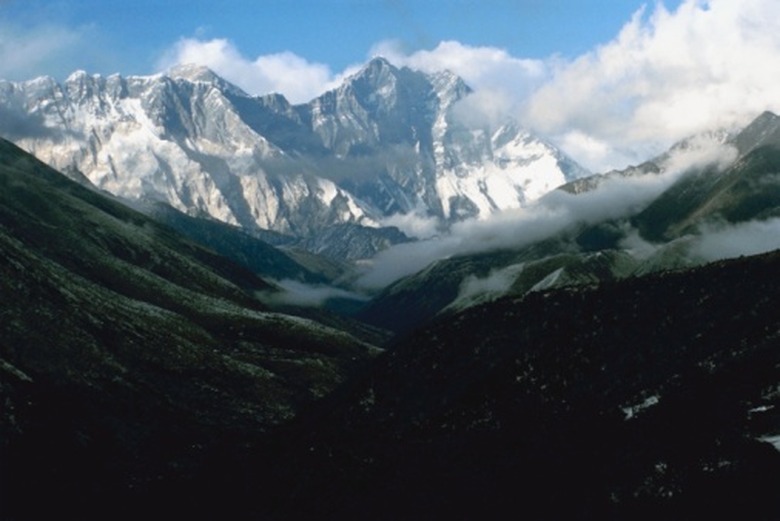Three Types Of Boundaries Between Lithospheric Plates
The Earth is approximately 7,900 miles in diameter, and is comprised of three major layers: core, mantle and crust. Of the three layers, the crust is the thinnest, with an average thickness of 15 to 18 miles. The crust and the uppermost, solid part of the mantle combine to form a rigid layer of rock called the lithosphere, which is broken into many pieces called oceanic or continental plates. Areas where plate edges meet are called plate boundaries. In geology, plate boundaries are where the real action happens.
Plate Tectonics
Plate Tectonics
Lithospheric plates, commonly called tectonic plates, fit together on the Earth's surface like a jigsaw puzzle. Scientists believe that the plates float on a hot, semi-solid region of the mantle called the asthenosphere. This movement is called plate tectonics. Movement of the lithospheric plates is most easily observed at the plate boundaries, where the plates converge, diverge or slip sideways. Most earthquakes and volcanism occur along or near lithospheric plate boundaries.
Convergent Plate Boundaries
Convergent Plate Boundaries
Convergent plate boundaries are regions where two plates converge, or collide into each other. These boundaries are sometimes called subduction zones, because the heavier, denser plate pushes beneath the lighter plate in a process called subduction. Subduction zones are associated with strong earthquakes and spectacular volcanic landscapes. The Ring of Fire around the margins of the Pacific Ocean is a direct result of plate convergence and subduction.
Sometimes continental plates of similar density collide and neither is heavy enough to create a subduction zone. When this happens, the brittle crust folds up and splinters as the plates collide. This process created the Himalayan Mountains.
Divergent Plate Boundaries
Divergent Plate Boundaries
Divergent plate boundaries are regions where lithospheric plates are moving away, or diverging from each other under the sea. In contrast to convergent boundaries that destroy old crust by subduction, divergent boundaries create new crust through a form of volcanism.
As plates move apart, magma wells up from beneath the surface to fill the spaces left by the diverging plates. The magma rises and cools in a continuous process, forming chains of volcanic mountains and rift valleys called mid-ocean ridges. The Mid-Atlantic Ridge was formed by this process.
As magma cools and forms new crust, it pushes the plates apart in a process called oceanic spreading. Oceanic spreading is slowing pushing North America away from Europe.
Transform Plate Boundaries
Transform Plate Boundaries
The third type of lithospheric plate boundary is a transform boundary. Sometimes called a conservative boundary, because crust is neither created nor destroyed at the boundary, transform boundaries occur in regions where plates are sliding horizontally past each other. Transform boundaries are typically found on the ocean floor but occasionally occur on land.
An example of a transform boundary is found near the West Coast of the United States, where the North American and Pacific Plates are moving past each other. The most visible manifestation of transform boundary movement is the San Andreas fault in California. Earthquakes along transform boundaries are generally shallow. They are caused by the accumulation and sudden release of stress and tension as the plates slip past each other.
Cite This Article
MLA
Donald, Doug. "Three Types Of Boundaries Between Lithospheric Plates" sciencing.com, https://www.sciencing.com/three-boundaries-between-lithospheric-plates-8450244/. 24 April 2017.
APA
Donald, Doug. (2017, April 24). Three Types Of Boundaries Between Lithospheric Plates. sciencing.com. Retrieved from https://www.sciencing.com/three-boundaries-between-lithospheric-plates-8450244/
Chicago
Donald, Doug. Three Types Of Boundaries Between Lithospheric Plates last modified March 24, 2022. https://www.sciencing.com/three-boundaries-between-lithospheric-plates-8450244/
